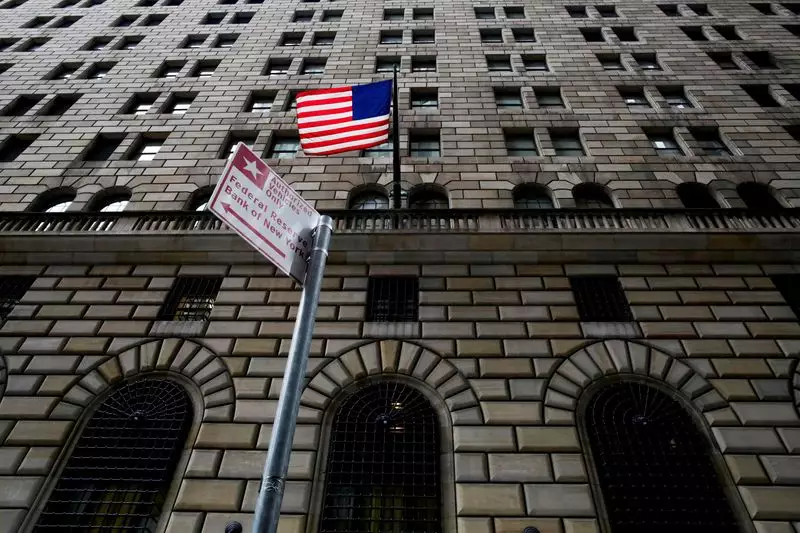The dynamics of global finance have grown increasingly complex, particularly evident in the wake of the Federal Reserve’s recent announcements regarding interest rates. The ramifications of U.S. policy extend far beyond American borders, influencing currency stability and economic strategies in emerging market nations.
On a seemingly ordinary day in October, the Federal Reserve hinted at a more restrained approach to interest rate cuts in 2024. This statement sent shockwaves through global markets, instigating a flurry of activities among central banks in countries such as Brazil, Indonesia, and India. Investors responded to the Fed’s suggestion of persistent inflationary risks, attributed largely to the anticipated economic policies of incoming President Donald Trump. These concerns led to a dramatic increase in U.S. Treasury yields, thereby strengthening the U.S. dollar to its highest levels against a basket of global currencies seen in two years.
Emerging markets were particularly shaken by this announcement. As yields rose, the dollar became more attractive to investors, prompting capital flight from these economies. The South Korean won experienced its steepest drop in 15 years, while the Indian rupee and Indonesian rupiah faced historic lows. The MSCI index, which tracks emerging market currencies, also descended to a four-month nadir.
In reaction to the Fed’s announcement, several central banks scrambled to defend their currencies. The proactive measures taken included selling off U.S. dollars and issuing stern warnings to markets, signifying an urgent need for intervention. In India, the central bank’s efforts intensified as the rupee slid beyond the psychological barrier of 85 to the dollar.
Experts like Chris Weston, research head at Pepperstone, noted that the recent sell-off in U.S. Treasury bonds was a clear signal for traders to re-enter dollar-long positions, further eroding emerging market currencies. This situation underscores a particularly precarious balance that these countries must strike—navigating between immediate currency stabilization and broader monetary policy considerations.
The emerging market economies now face a dual challenge: firstly, to stabilize their currencies without causing undue strain on their domestic economies, and secondly, to recalibrate monetary policies to counterbalance high volatility. HSBC’s chief Asia economist Fred Neumann remarked that the hawkish stance taken by the Fed restricts the flexibility of emerging market central banks, delaying necessary policy adjustments.
For instance, the Brazilian real sank to an unprecedented low despite significant state intervention. An initial $3 billion privilege had little effect on stabilizing the economy; however, a follow-up intervention of $5 billion finally yielded a counterflow, with the real recovering slightly.
Furthermore, the South Korean won remains a focal point of concern. Despite intervention efforts aimed at maintaining a valuation close to 1,450 won per dollar, experts confirmed that a strong rebound was unlikely given the current market conditions. The People’s Bank of China maneuvered in defense of its own currency, adjusting daily reference rates downwards in an effort to soften the dollar’s impacts on the yuan, which still, nonetheless, drifted down to a 13-month low.
The interplay of Federal Reserve policies and emerging market responses is further complicated by the anticipated economic strategies of the U.S. government under Trump. With potential tax cuts and trade renegotiations looming, the perception of heightened growth in the U.S. economy strengthens the dollar even more, guiding investment flows away from emerging markets and placing further downward pressure on their currencies.
Analysts caution that the high volatility currently present in the market could endanger previous investment strategies predicated on high-yield Asian currencies. As the Federal Reserve’s projections tighten, suggesting only two cuts next year instead of the four previously expected, it reinforces the necessity for emerging markets to adopt vigilant monetary policies to avoid the pitfalls of overly aggressive currency devaluation.
The evolving landscape of global finance, centered on decisions made by the Federal Reserve, serves as a test for emerging market economies. Faced with the dual pressures of currency stabilization and growth maintenance, these nations must navigate uncertain waters with caution. As central banks in Asia and South America endeavor to protect their currencies, the broader implications of U.S. monetary policy will continue to weigh heavily on their economic prospects for the foreseeable future. The resilience of these economies is now called into question as they adapt to a reality shaped not only by domestic circumstances but profoundly influenced by decisions made thousands of miles away.

